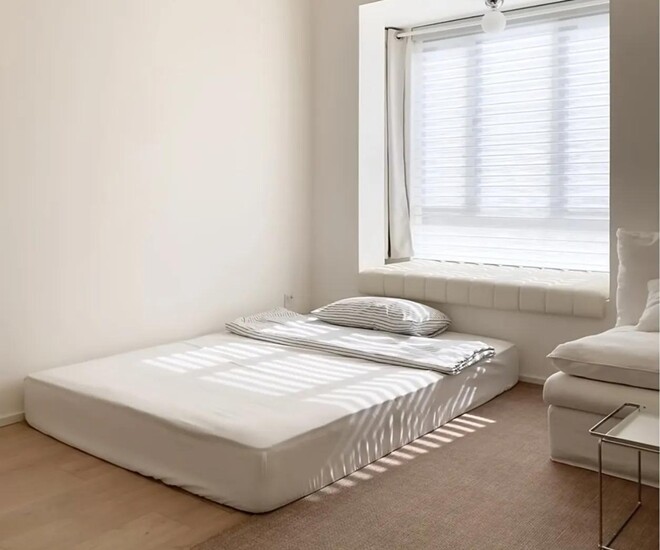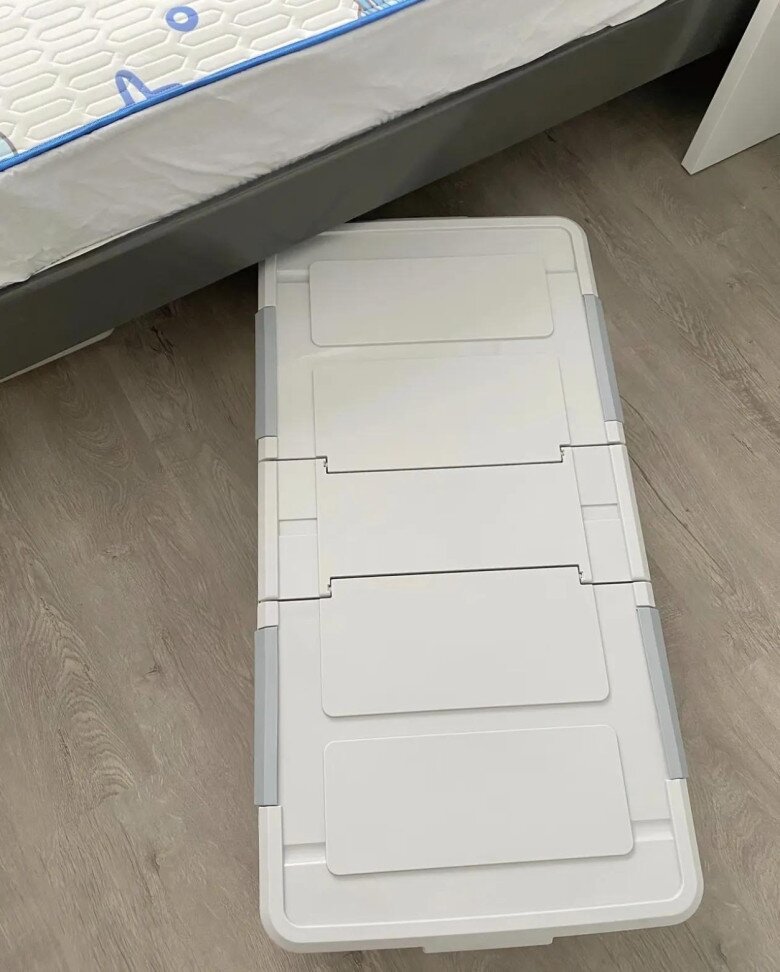Is placing a mattress directly on the floor as ideal as it seems? Let’s explore whether this trend truly lives up to its hype.

Why do many people avoid bed frames?
Admittedly, placing a mattress directly on the floor has its allure. For starters, it saves you a significant amount of money by eliminating the need for a bed frame, which is particularly appealing for those on a tight budget.
Additionally, the absence of a bed frame creates a more spacious and streamlined look in the bedroom, especially in smaller spaces.
This style also exudes a trendy, Instagram-worthy vibe, making it a popular choice for those aiming to create a visually striking and photogenic space.
While these benefits are tempting, they shouldn’t overshadow the potential drawbacks of placing a mattress directly on the floor, as the consequences can be far more costly.
Why should you avoid placing a mattress directly on the floor?
– Poor ventilation and moisture issues
The biggest challenge with placing a mattress directly on the floor is the risk of moisture seeping in from the ground, especially during humid seasons like the rainy season in the South or the damp season in the North. The floor acts as a cold surface, causing condensation to accumulate at the bottom of the mattress, which lacks proper airflow. Over time, the mattress absorbs moisture like a sponge, creating an ideal environment for bacteria and dust mites to thrive in the warm, damp conditions.
During fall and winter, the floor temperature is often several degrees cooler than the room air. When the mattress is in direct contact with the floor, this coldness transfers upward, making you more susceptible to feeling chilly.

– Insects crawling onto the bed
Anyone who’s experienced outdoor survival knows that sleeping off the ground, such as in a hammock, is essential to avoid moisture and prevent insects from crawling onto you during the night. You might think, “My home doesn’t have insects,” but in reality, every home does, and many are active while you sleep. Just because you don’t see them doesn’t mean they’re not there.
– Loss of a sense of security during sleep
If you’re accustomed to sleeping on a raised bed, transitioning to a mattress directly on the floor can make surrounding furniture appear taller, creating a sense of pressure and insecurity. This height difference can make it difficult to sleep soundly, as it alters your sleeping environment.
– Cleaning becomes more challenging
Air circulation carries dust, hair, and dead skin cells into the gap between the mattress and the floor, which is inaccessible to vacuum cleaners or robots. Over time, this area becomes a hotspot for dirt and allergens, posing a significant challenge for maintaining cleanliness.
To keep the area around the mattress clean, you’ll need to ensure the bedroom floor is spotless. However, traditional mops and brooms often harbor bacteria, making it unhygienic to clean near the mattress. As a result, you may resort to using wet wipes to clean the floor, adding an unnecessary layer of inconvenience.
– Getting out of bed becomes more difficult
Due to the low height of the mattress, getting up requires using your hands and core strength to sit up, making the process more strenuous. This is particularly challenging for individuals with knee issues. Imagine sitting on the floor and trying to stand up—if this happens every morning or during a midnight trip to the bathroom, it can fully wake you up and disrupt your sleep.
– Loss of under-bed storage space
In compact modern apartments, storage space is often limited. Seasonal items or bulky, infrequently used objects like storage boxes, fans, heaters, strollers, and folding chairs are typically stored under the bed. Placing a mattress directly on the floor eliminates this valuable storage area, causing significant inconvenience, especially in small homes. Ironically, those who opt for floor-level mattresses are often residents of such compact spaces.

– Rapid deterioration in appearance
Without a bed frame for support, the edges of the mattress are prone to sagging and deformation over time, especially in areas frequently sat upon. Direct contact with the floor also accelerates wear and tear, causing the mattress to appear dirty and worn. Without regular maintenance, the mattress quickly loses its sleek and luxurious appearance.
– Impact on mattress warranty
Many mattress manufacturers require the use of a bed frame or proper foundation to maintain warranty coverage. Placing a mattress directly on the floor can void the warranty if the mattress sags or becomes damaged. The savings from skipping a bed frame may not cover the cost of replacing a damaged mattress.

































